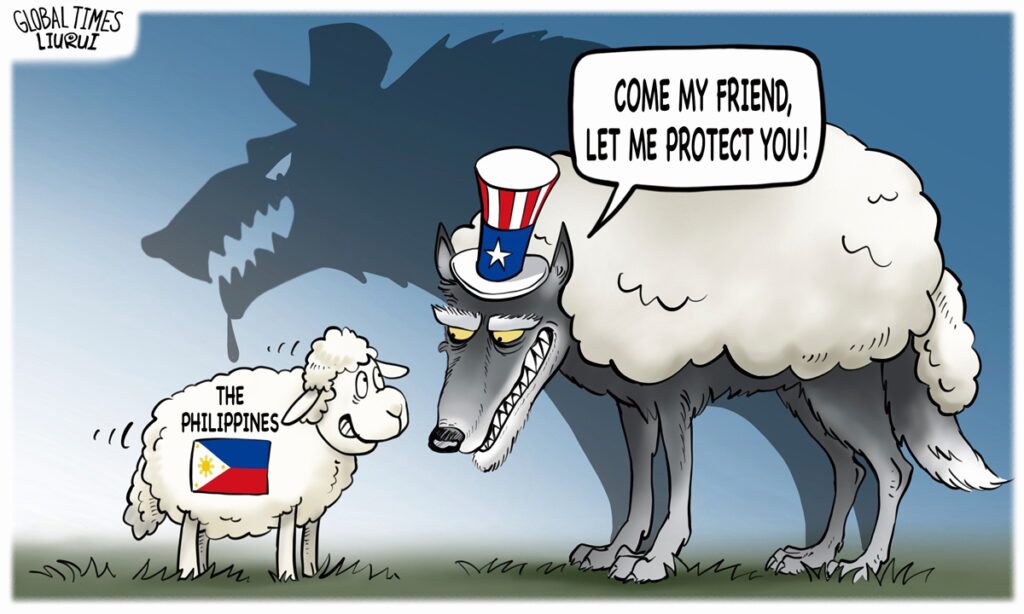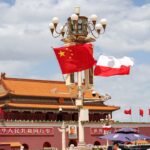PLA Navy ramps up training, patrols to deter potential provocation: report
Although the Philippines’ latest provocation in the waters off China’s Ren’ai Jiao (also known as Ren’ai Reef) in the South China Sea has failed under the decisive law enforcement by the China Coast Guard (CCG), the US is still trying to hype the tension in the region, as it wants more regional countries to be used and seek hegemonic interests from conflicts, said Chinese experts after a senior US diplomat made groundless accusations in Vietnam against China recently.
Washington’s meddling is the root cause of the current tension disrupting regional peace and stability, and it using the mutual defense treaty with Manila to harm China’s sovereignty is doomed to fail, experts said. Apart from the law enforcement forces like the CCG, the Chinese navy is also well-prepared for any further potential provocation from the US navy in the region, said analysts as the vessels of the Chinese People’s Liberation Army (PLA) Navy have recently conducted training exercises and patrols in relevant waters.
US Assistant Secretary of State for East Asia and Pacific Affairs Daniel Kritenbrink visited and held talks in Vietnam on Saturday, according to the AP. Kritenbrink pointed finger at China’s necessary, lawful, justified, professional and restrained law enforcement against the Philippines’ provocation on June 17.
“China’s actions, particularly its recent actions, have been irresponsible, aggressive, dangerous, deeply destabilizing,” Kritenbrink said, stressing that defense treaties between the US and its ally the Philippines were “ironclad.”
In response to the remarks from the US official, the Chinese Embassy in Vietnam released a statement on Sunday saying that “China has indisputable sovereignty over the islands in the South China Sea and rights of jurisdiction over relevant waters … The history of the issue of Ren’ai Jiao is very clear. For its own geopolitical interests, the US has repeatedly meddled in and provoked the maritime issues between China and the Philippines. On the one hand, it has encouraged and supported the Philippines’ infringement and provocations in the South China Sea, and even blatantly supported the Philippines by threatening to invoke the US-Philippines Mutual Defense Treaty at every turn.”
“On the other hand, the US has ignored facts, distorted right and wrong, amplified disputes and provoked confrontation, and made groundless accusations against China’s legitimate rights protection. What the US has done seriously violates international law and basic norms governing international relations; undermines China’s sovereignty and rights and interests; and jeopardizes regional peace and stability. China expresses strong dissatisfaction with and firm opposition to this.”
Li Haidong, a professor at the China Foreign Affairs University, told the Global Times on Sunday that “the international community, including all regional countries, can see clearly from relevant videos and photos that it was the Philippines who sent its military personnel to intrude into China’s territorial waters, and the provocation met with decisive actions from the Chinese law enforcement forces. Who is provoking? Who has been forced to respond to provocation? Who is aggressive and who is being restrained? Who wins and who loses? Answers to these questions are all clear.”
However, the US doesn’t want to give up its meddling, so it sends the diplomats to Vietnam, not the Philippines, to try to expand the mess to other countries, to try to instigate more regional countries to fall into the trap of confrontation, and played up the so-called mutual defense treaty over and over again despite that the US ally has paid heavy prices after having direct frictions with China but only receive lip service from Washington, said Li.
Don’t be manipulated
After the friction on June 17, Manila is recently trying to soften its tone. Philippine President Ferdinand Marcos Jr said on Sunday his country is not in the business of instigating wars and will always aim to settle disputes peacefully, amid escalating maritime confrontations with China, Reuters reported.
On Friday, Manila also said it has no plan to invoke its mutual defense treaty with the US after the June 17 friction. “That has not been considered in our discussions,” the Philippines’ presidential assistant on maritime concerns Andres Centino said when asked if the Philippines was considering activating its treaty with the US, the AP reported.
Li said the Marcos Jr’s administration will gradually realize that there is nothing good for being used by the US to confront China, and the more it has frictions or tensions in the South China Sea, the more it will learn, and maybe it just cannot get rid of the control by Washington. “If they can return to reasonable negotiation rather than pointless provocations on the sea, the nightmare will end immediately,” he added.
The Chinese Embassy in Vietnam said in its statement released on Sunday that “Thanks to the joint efforts of China and ASEAN countries, the situation in the South China Sea has remained generally stable. Countries in the region should remain on high alert to external interference and continue to firmly hold the leading role in solving the problem in their own hands.”
In the eyes of regional countries including Vietnam, Malaysia, Brunei and Indonesia, the act that brings external powers into the regional issue like what the Philippines is doing right now is irresponsible and absolutely unhelpful for the peaceful settlement on the maritime issue, analysts said.
This is why no regional countries speak for Manila’s provocation, and China will keep working with other regional countries to proceed negotiation process for the Code of Conduct in the South China Sea, and hopefully, the Philippines can return to the reasonable stance that is used to have as soon as possible, said Li.
PLA Naval deterrence
The Chinese PLA Navy has reportedly ramped up training exercises and patrols in and near the South China Sea amid the recent tensions in the region caused by the Philippines’ continuous provocations.
A naval task force featuring landing ships the Danxiashan, the Laotieshan and the Lushan recently carried out a four-day all-weather full-course combat exercise in the South China Sea, as the warships practiced air defense, alongside berthing and personnel rescuing, China Central Television (CCTV) reported on Saturday.
Observers said these landing ships are of the Type 072 and Type 073 series, which are smaller than the PLA Navy’s Type 071 amphibious landing ship and Type 075 amphibious assault ship.
While the larger amphibious vessels can carry more troops and equipment and release them at a certain distance away from the shore, the smaller landing ships can conduct grounding operations directly on islands and reefs, giving the latter special roles to play, a Chinese military expert who requested anonymity told the Global Times on Sunday.
For example, Type 072 series landing ships have participated in multiple major military operations, including the building of the maritime observation station on Yongshu Jiao (also known as Yongshu Reef) in the Nansha Qundao (also known as the Nansha Islands) in the South China Sea in 1988, thepaper.cn reported.
The drills came after Philippine media reported the presence of a Type 071 amphibious landing ship and a Type 075 amphibious assault ship near the Nansha Qundao this month, as the PLA Navy has reportedly its vast amphibious arsenal deployed in the region.
Amphibious vessels are not the only forces the PLA Navy has deployed in the South China Sea, as it has also sent some of its most powerful surface warships to the region for drills and patrols.
The armed forces of the Philippines on Friday confirmed the transit of four PLA Navy warships headed by the Type 055 large destroyer Dalian through the Balabac Strait on Wednesday, Philippine media outlet the Daily Tribune reported on Saturday.
The Philippine side said that the Balabac Strait, connecting the South China Sea and the Sulu Sea, “is commonly used by international vessels.”
Earlier this month, official Chinese media revealed that three other Type 055s, widely believed to be the world’s most powerful destroyer, the Xianyang, the Zunyi and the Yan’an, had also recently conducted round-the-clock long-endurance combat exercises in the South China Sea.
This means that all four Type 055 large destroyers currently in service with the navy of the PLA Southern Theater Command facing the South China Sea were sailing in or near the South China Sea recently.
The above-mentioned military expert said that while the PLA Navy is not directly involved in the recent encounters with the Philippines, it served as a strong backing to the CCG and a powerful deterrent against the Philippines and external forces like the US.
Should the Philippines further push up provocation or external forces interferes, leading to escalations or emergencies, the CCG and the PLA Navy have what it takes to safeguard national sovereign security as well as maritime rights and interests, analysts said.
Global Times




